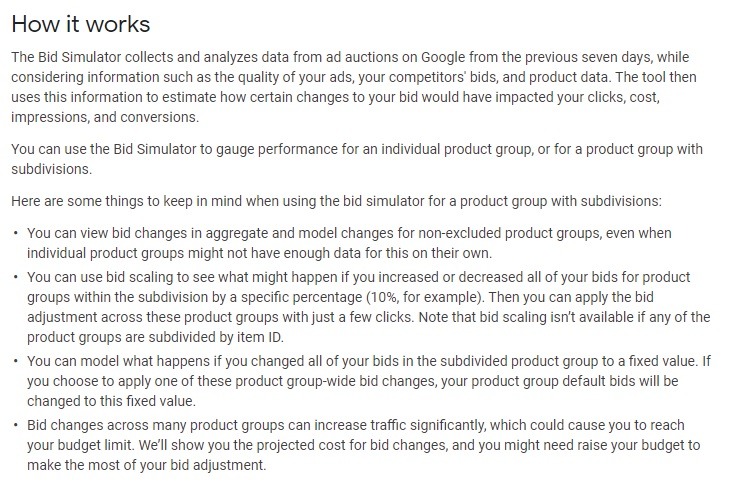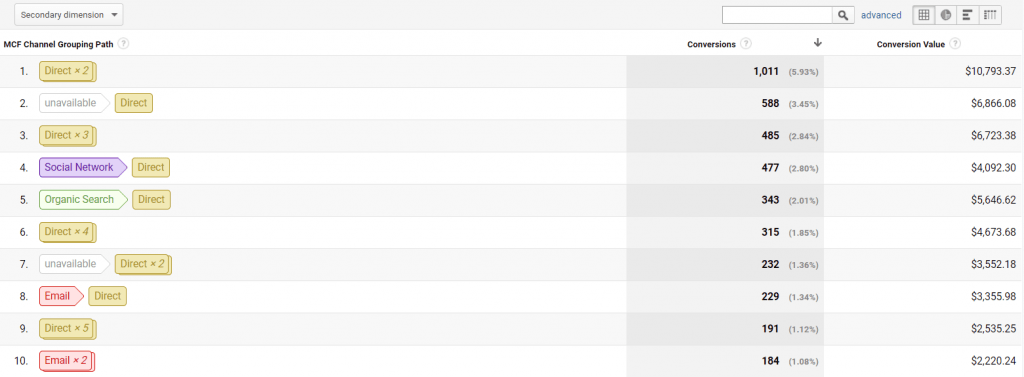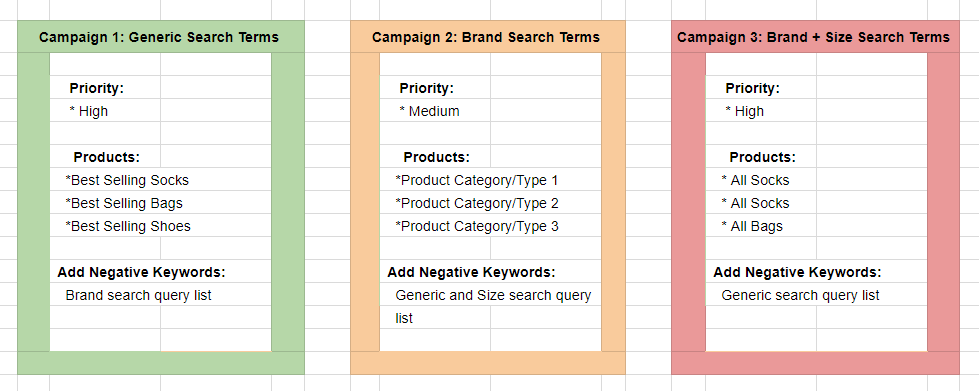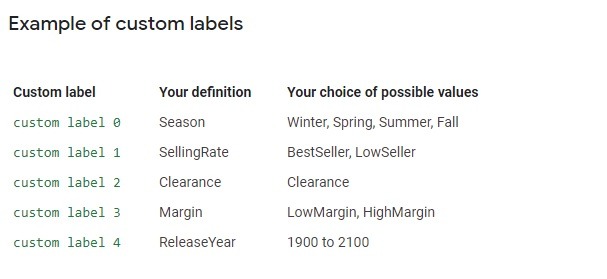.Want to know how to perform a Google Shopping audit like a pro? You’ve come to the right place.
When it comes to Google ROAS, almost nothing beats the power and automation of Shopping campaigns. However, despite Shopping’s automation capabilities, it is still vital to manage and optimize these campaigns for peak performance to fully capitalize on their conversion- and traffic-driving power. And without regular audits, you could literally be throwing revenue away.
By doing regular Shopping audits, you will be able to quickly assess which products are costing you money and which ones are driving conversions. Additionally, they also ensure that the traffic you’re bringing in is relevant and let you assess the overall health of your account in terms of conversion costs.
Shopping campaign auditing can be complicated, even for the most experienced of Google Ads marketers. It involves a deep dive into your data and each and every element of all your campaigns.
However, the rewards for getting it right are well worth the effort. This is where this guide comes in! We’ve put together this full step-by-step checklist to help you audit your Google Shopping campaigns like a pro and get them to peak performance in no time!
Beginner Tip: If you’re new to using Google Shopping, we suggest starting with our Google Shopping Full Guide post.
Step 1: Do a Quick Policy Audit
Are your product descriptions, categories, and types in line with Google’s latest Shopping ad policies?
Before you look inwards to your own account and campaigns, you need to do a general recap of Google’s Shopping ad policies. You should be checking their prohibited and restricted content and products, and editorial and technical guidelines—for each country you sell in—on a regular basis.
It is vital that you and your marketers stay on top of changing policies and platform updates to ensure you can adjust in real-time and prevent any performance issues or product removals they can cause.
Here are some of the most recent changes to be aware of.
- For eCommerce brands selling and advertising in the EU: Beginning in mid-January 2021, Google started showing “Missing potentially required value” warnings when the energy_efficiency_class attribute is missing for products. You can find out more here.
- For eCommerce brands selling in the US: As of January 14, Google expanded their sensitive events enforcement, which affected some brands with Google Shopping campaigns for election-aimed products. You can find out more here.
Step 2: Analyze and Audit Data and Metrics from Google Shopping Reports and Analytics
Have you looked at your Google Shopping metrics to see how their performance lines up with your KPIs? Have you audited your Google Analytics and Ads reports to highlight the main optimization shortfalls leading to poor ad performance?
Before you make any adjustments to any part of your Google Shopping campaigns and account optimization, you need to take a good look at your current Shopping and store metrics.
This means diving into your campaign reports, top Google Shopping metrics, and site analytics.
Let’s look at each.
Top Shopping Campaign Reports and Metrics for Auditing
There are four main performance reports that you should assess before implementing Google Shopping auditing changes.
- Product groups page: When reviewing product group page reports, you want to customize your columns based on the specific KPIs you’ve set for your brand and prioritize those tweaks first. Additionally, you want to make use of its “add segments” function to segment by days of the week, the type of click, or the devices being used by potential shoppers. You can read more about columns and segment options here.
- Products page: This will give you access to performance metrics for specific products in each campaign. This is vital to ensuring that you don’t have weak products driving down your overall ROAS averages. You can read more about your product page report options here.
- Predefined reports page: These are customized performance reports at any granular level and are vital for intermediate sellers to create reports based on their specific brand KPIs and needs. They allow you to set your own split data rows so you can prioritize the performance metrics that are most important to you. You can read more about how to build these reports here.
- Auction insights report: A Google Shopping auction insights report gives advertisers impression shares and overlap rates, and allows you to compare performance with your competitors. This is essential data that points to missed opportunities in your niche that you can tweak for improved reach.
Bonus Content: 9+ Must-Track eCommerce KPIs to Ensure Google Ads Success
Three Main Shopping Campaign Performance Scenarios to Watch Out for and How to Fix Them
Depending on your KPIs, the reports above will give you a clear picture of how your Google Shopping account is performing overall.
Generally speaking, there are three main scenarios that marketers should look out for when auditing their Google Shopping account and campaigns. They will help you drill down which elements you should focus your auditing and optimization efforts on first.
Google Shopping Performance Scenario 1: Low or Zero Impressions
Before optimizing any Google Shopping campaign or product group, you need to make sure the product is being seen.
One of the first metrics you want to keep an eye on is impressions. If a product is getting virtually no impressions and is still active (in other words, Google hasn’t rejected the product), then chances are your bids are too low.
You will want to raise your bids in small increments until impressions have improved. Then, assess CTRs to see whether the product needs further optimization.
Pro Tip: Always test before adjusting bids to optimize performance. Google’s Bid Simulator tool will help you test how new group bids could affect your ROAS before you go all in.
Google Shopping Performance Scenario 2: High Clicks, Low Conversions
Next in your Google Shopping audit, you will want to look at your conversion-to-click ratio for products that are getting lots of clicks but very few conversions.
Generally speaking, these metrics point to a relevance issue as the ads are bringing traffic but not converting it. In these cases, you’ll want to further audit three elements:
- Product, category, and landing pages
- Negative keyword lists
- Product feeds (to ensure you are matching content with expectations)
Google Shopping Performance Scenario 3: High Impressions, Low Clicks
Last on the list of the top three scenarios you want to look out for when auditing your Google Shopping campaigns are those products with very high impressions but very low clicks. This means your bids are on point but product information such as price, images, and descriptions need closer scrutiny. In other words, a product feed audit will be required.
Analyzing Your Google Analytics to Audit Shopping Performance
Do you have a full picture of how your Google Shopping campaign performance compares to site performance? When paired with Google Ads reports, your Google Analytics can help you audit your Shopping campaigns.
Here are four top Google Analytics data points to assess when auditing the health of your Google Shopping account and campaigns.
1. Site Diagnostic Analytics Data
Under the “Behavior” tab in Google Analytics, marketers can assess critical diagnostic information for specific site pages and the store itself.
This will show you whether specific pages have poor bounce rates or what your most frequent exit pages are. Both these metrics can point to issues with conversions such as scenario two mentioned above – high clicks but low conversions.
Additionally, suppose you find that each campaign type’s overall performance, regardless of the PPC channel (including Google Shopping), is low for a specific product or category page. In that case, it’s very likely that the page itself needs to be audited and optimized first, before other optimization hacks are implemented for performance.
Pro Tip: Use this free site audit tool to audit your store’s technical performance, shopping experience, trustworthiness, and marketing strategy in minutes, compared to top competitors in your niche → Benchmark Hero.
2. Traffic and Revenue Percentages From Shopping Campaigns
By determining how much of your traffic and store conversions come from Google Shopping, you can find missed opportunities. You can locate this data in the “Source/Medium” tab under “All Traffic” in Google Analytics.
Google Shopping is one of the best Google Ads types in terms of ROAS, so you will need to make sure that these campaigns account for a substantial percentage of store site traffic and revenue. This report will also help you understand how Shopping compares to general up or down trends in revenue.
For instance, if you notice that overall revenue is up but Google Shopping revenue is constant or decreased, you can determine whether you should be allocating more budget to Shopping campaigns.
3. Google Analytics Product Performance
While Google Ads reports give you total conversions based on clicks, Analytics data provides a much more comprehensive picture of a product’s popularity across all channels. You can find this report by accessing “Product Performance” in your Google Analytics “Conversions” tab.
In a nutshell, this report will help you finely tune your lists of top-performing products, which you can use for Shopping segmentation to boost performance. We will also help you determine which products are worth increasing your bids on.
4. Multi-Channel Conversions Analytics Reports
Let’s say you have a Google Shopping campaign with high impressions and clicks but low conversions. Your first instinct is to tweak the ad and optimize the landing page to improve performance.
However, this is not giving you the whole picture. What about potential shoppers who didn’t buy then and there, but still found the ad highly relevant and plan to come back to your store and purchase the product at a later stage? This is where multi-channel reports are key!
Found in the “Multi-Channel” tab in “Conversions,” this report will help you audit how Google Shopping campaigns fit into your overall marketing funnel. This gives you a much better picture of your campaign’s performance, which in turn will assist you in making the right optimization choices.
Auditing conversion paths, path lengths, and assisted conversion metrics will help you see how Google Shopping is influencing purchasing decisions, even if it doesn’t result in a sale then and there.
It will also help you determine the route customers are taking when they do buy from a Shopping ad, which you could then replicate with other campaigns and products.
Step 3: Audit Your Google Shopping Campaign Structure and Priorities
Now that you have a firm grasp of your store and campaign metrics, it’s time to audit the most critical Google Shopping element: your campaign structure.
Auditing and adjusting your campaign structure will ensure you can more efficiently audit and tweak campaigns, groups, and products. Additionally, with the help of custom labels, you can categorize your products into segments for better optimization, and make it easier to create new campaigns or groups.
The three most important elements of a high-performing Shopping campaign structure are:
- Campaign priority settings
- Ad groups
- Product groups
Auditing Your Google Shopping Campaign Structure
Generally speaking, established eCommerce brands should be using a multiple-campaign structure for their Google Shopping campaigns. If you’re still using a basic structure, you will want to split it into different Shopping campaigns to enable you to segment by products, priority settings, and devices.
Because you have less control over Shopping than other Google ad types, the way you structure your campaigns plays a key role in ensuring you are not wasting budget and bringing down your overall ROAS. Some intermediate and expert Shopping campaign structures include:
- Three campaigns with three priorities
- Multiple campaigns with multiple ad groups
- Three-tiered generic/brand priority structures
- Dividing your campaigns based on product profit margins
- Three-tiered by query length structure
You can read about these and other campaign structure optimization hacks in our Best Google Shopping Campaign Structures for Performance post.
Pro Tip: Don’t forget to audit optimize and test your Smart Shopping campaigns. When using the same product in a variety of campaigns, Google prioritizes Smart campaigns. Therefore, it’s important to optimize and tweak these campaigns first. You will also want to test each Smart Shopping campaign over a two week period, before evaluating performance and investing higher budgets.
Once you have looked at your overall structure, it’s time to dig into group and product segmentation.
Step 4: Do a Product Grouping and Segmentation Analysis
Product group segmentation can make or break your Google Shopping campaign success. This is because it allows eCommerce marketers to concentrate budgets and Shopping KPI goals into groups that bring you the best ROAS.
There are various ways you can segment your Shopping product groups based on your specific brand, niche, and market to find the best combination for you in terms of performance. This could include segmenting products based on profit margins, categories, best-seller lists, traffic generated, or seasonality.
The trick is having enough segmentation to improve ROAS without finding yourself with 50+ campaigns to monitor, manage, and optimize daily—unless, of course, you’re using an advanced PPC management tool that uses AI to optimize your campaigns in real-time.
Here are some of the top product grouping and segmentation strategies to test for your Shopping campaigns.
- Best-Selling Products: Your top revenue-driving products should be top of your segmentation list. Leveraging your best-selling products for Shopping campaigns can help boost conversions and increase ROAS across your whole account.
- New Products/Categories: Before adding new products to existing groups, you should segment them into new groups and campaigns to test bid and performance. This ensures that new, untested products don’t bring high-performing campaigns down.
- Categories or Brand Types: Creating groups around top categories or segmenting by brands is another way you can capitalize on your best-selling products to boost ROAS. Additionally, segmenting according to the categories you have in your store makes groups easier to manage.
- Large Inventory Splits: If you have a large and popular category, you should be testing sub-category segmentations. For eCommerce brands with extensive inventories, grouping products by brand or category could be hard to manage from an admin perspective. However, too little segmentation and it will be hard to optimize for ROAS given the wide range of products and markets.
- Seasonal Products: Segmenting your marketing based on the seasonality of products or categories may seem like a no-brainer. However, it is often overlooked when creating Shopping campaigns. Having specific groups split by the season in which they are most popular will enable you to boost campaign investment during peak seasons. Ideally, you would have three product groups: annual, winter, and summer.
- Product Value Segmentation: For eCommerce brands selling a wide variety of products in terms of price, it can be effective to segment groups so that you can adjust bids based on their value. This also helps you target specific market segments, using low-priced product groups for first-time buyers and higher-end products for remarketing campaigns.
Side Note for Beginners: To get creative with your segmentation, you will need to make sure you’re using custom labels.
Step 5: Review and Optimize for Negative Keywords
Another critical element of a high-performing Google Shopping campaign strategy is negative keywords. As Google Shopping doesn’t use keyword targeting, negative keywords are vital to managing relevance. Without the right negative keywords, you run the risk of bringing non-targeted traffic to your product pages that you are less likely to convert—ultimately bringing down your ROAS.
But there is an even more significant drawback to attracting shoppers who aren’t actively looking for what you’re selling. Suppose too many people are clicking through to products that they quickly realize they are not interested in. In that case, you run the risk of Google lowering your quality score, which will affect your CPCs, impressions, and overall ROAS for your Shopping account.
Google Shopping enables you to allocate negative keywords at ad group and campaign level. And like other Google ad types, it offers exact, phrase, or broad match modifying options. However, unlike other campaign types, you will need to be laser-focused with your negative keyword lists to be able to tweak campaigns for peak performance.
This means implementing campaign-wide, general negative keywords such as “free” or “cheap,” or specifying similar-sounding products like “eyeglasses” versus “drinking glasses.” If you focus only on selling sandals, for example, you would want to eliminate other footwear searches by adding “boots” or “sneakers” to your lists. Additionally, you will want to create negative lists that you can use at group levels for specific product segmentations.
Here are three things you should look out for when auditing your Google Shopping negative keyword lists:
- Using one or very few broad, campaign-wide negative keyword lists. You will want to have enough lists that ensure every ad is optimized at campaign and ad group levels.
- Relying solely on exact match modifiers. Instead, look at your keyword reports and create lists that include exact, phrase, and broad match modifiers to tweak and fine-tune your strategy to suit your market and brand.
- Not reviewing and optimizing negative keyword lists regularly. Like with every aspect of Google Ads, your Google Shopping negative lists can’t be created and left. You want to keep a close eye on them and adjust when needed to boost ROAS. This also includes doing regular keyword audits to look for ineffective and irrelevant keywords.
Step 6: Audit Your Product Feeds
The last step in auditing your Google Shopping campaigns and account is diving into your product feeds. This is the most cumbersome of all the steps. It involves auditing, testing, and optimizing your feeds to ensure they do not cost you valuable revenue. You can have a superior campaign structure, pro product groupings, and a winning negative keyword strategy… but if your product feeds aren’t optimized, you run the risk of sending away all the traffic you worked so hard to get.
Yes, this includes reviewing your product categories, titles, and images. However, you also want to look at your Google Shopping categories and ensure that your products and other feed elements aren’t causing misrepresentation.
Here are the feed elements you will want to audit, tweak, and optimize to help improve campaign performance:
- Category allocation
- Titles
- Product photography
- Descriptions
- Prices
For a full step-by-step guide on optimizing your product feeds, click here.
Bonus Content: Increase Ad Success with this PPC Task Checklist
—
There you have it, your complete step-by-step guide on how to audit Google Shopping campaigns for peak performance. Ultimately, there is no one-size-fits-all approach to any marketing campaign, and Google Shopping is no different.
You will need to test, tweak, and optimize your campaigns continuously and be ready to pivot when needed. This is impossible if you are not doing regular Google Shopping audits. There is no doubt that this can seem like a mountain of work for bigger stores with extensive inventories. However, if you want your campaigns to convert – which you do, it’s a must.
Still have Google Shopping optimization questions? Post them in the comments below.

Nicole is a content writer with over sixteen years experience and flair for storytelling. She runs on a healthy dose of caffeine and enthusiasm. When she's not researching the next content trend or creating business content strategies, she's an avid beachgoer, coffee shop junkie and hangs out on LinkedIn.
Recommended articles
 Facebook Ads for eCommerce: 16 Strategies, Examples & Tips
Facebook Ads for eCommerce: 16 Strategies, Examples & Tips
 How to Build a Winning eCommerce Ads Strategy
How to Build a Winning eCommerce Ads Strategy
 Google Ads for eCommerce: Everything You Need to Know
Google Ads for eCommerce: Everything You Need to Know
 10X Your Traffic with PPC Management Software
10X Your Traffic with PPC Management Software
Comments
Powered by Facebook Comments










